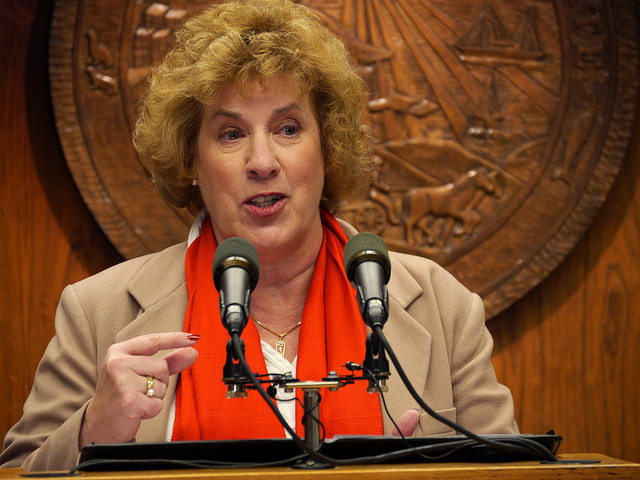Alaska’s state government has gained national attention for what it’s doing to keep its individual and family health insurance market from collapsing. Now the state is looking to the federal government to pay some of the cost of keeping down insurance price hikes.

The state Division of Insurance plans to ask the feds to offset its costs for the Alaska Reinsurance Program. The program is defraying large increases in monthly premiums that insurers charge their customers in the individual market.
For example, the state is paying $55 million next year to Premera to cover the cost of roughly 500 high-cost patients. Premera is the only company in Alaska offering individual insurance through the federal marketplace.
Premera lowered its planned increase for next year from 42 percent to 7 percent after the state legislature created the program.
But the legislature put a two-year time limit on the program, and lawmakers said the state doesn’t have the money to fund it on an ongoing basis. So Division Director Lori Wing-Heier said it’s important for the federal government to pay for reinsurance.
“We’d really like to see this reinsurance program into the future, just because of what we’re seeing that it did in 2017 to the rates,” Wing-Heier said.
So why would the federal government be interested in paying money for the program? There’s a simple reason. The feds are projected to save more than $50 million per year. That’s because the federal government will pay out less than projected in insurance subsidies to low and middle-income individuals, due to reinsurance lowering the premiums.
Those subsidies are required under the Affordable Care Act, the federal law that President-elect Donald Trump has vowed to work with Congress to repeal.
Wing-Heier said Congress could fund Alaska’s reinsurance program in its replacement for the ACA.
One model for the replacement is to pool and subsidize the highest risk — and most expensive — customers. Before the Affordable Care Act, Alaska and other states had high-risk pools.
“There has been a lot of talk amongst members of Congress that there should be high-risk pools again, to get these high-cost individuals out of the individual market – and we did that in this program,” Wing-Heier said.
Wing-Heier also is hopeful that Tom Price, Trump’s pick to be secretary of health and human services, will also be receptive to the state’s application for federal funding. Alaska wants to receive all of the federal savings.
“What his plan is, also speaks to reinsurance and high-risk pools,” Wing-Heier said. “So we’re hopeful, even with the change in administration, that we’ll get a favorable response.”
Premera spokeswoman Melanie Coon said the company is monitoring what the federal government does. But she also said the reinsurance program could be attractive to the new administration as it plans for the future of the individual insurance market.
She said that’s particularly important in a state like Alaska, which has a small pool of sick people in the individual market.
“Having the stable source of funding definitely will work towards stabilizing the market,” Coon said. “And so what that means is, it would be more attractive for more people to join and seek coverage and enroll in the individual market, which would help with the pool size.”
Keeping insurance costs down is particularly important for the roughly one-in-seven Alaskans who don’t qualify for federal tax credits to buy individual insurance, according to Spencer Biegel, an insurance agent and owner of Alaskan Benefit Insurance Consultants in Anchorage.
“Those people, of course, are the ones that suffer the most, with paying the full cost of their health insurance premiums,” Biegel said. “And they’re exorbitant.”
Biegel noted one 55-year-old single female client of his will pay more than $1,200 a month next year.
The public has a chance to comment on the Division of Insurance’s application to the federal government until December 23rd.
Andrew Kitchenman is the state government and politics reporter for Alaska Public Media and KTOO in Juneau. Reach him at akitchenman@alaskapublic.org.




